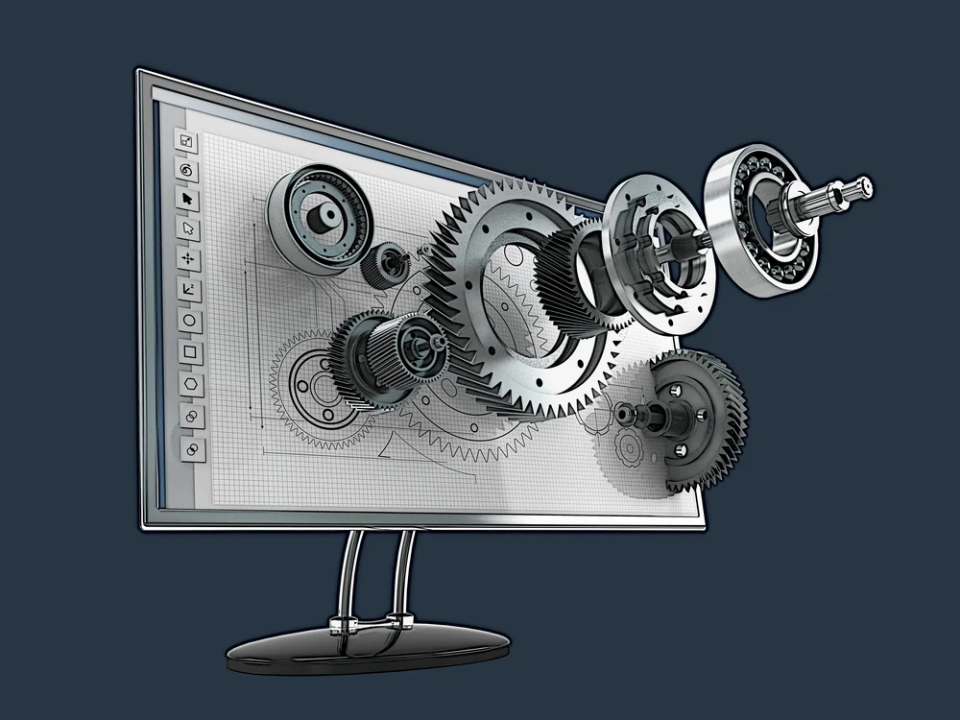Introduction
In the dynamic world of engineering, innovation is more than a buzzword; it is a must. The ability to effectively and successfully develop, design, and manufacture things is a critical driver of progress in a variety of industries. Enter Mechanical Computer-Aided Design (CAD), a game changer that has altered the way engineers practice their craft. If you’re interested in learning more about this essential skill, consider enrolling in a mechanical CAD course. This detailed study will look at Mechanical CAD’s diverse impact on engineering.
The Genesis of Mechanical CAD
To realize the significance of Mechanical CAD, one must first understand its origins. CAD technology stretches back to the 1960s, when the first computer-based drafting systems were introduced. Since then, CAD has progressed tremendously, propelled by increases in processing power, graphical capabilities, and software development. What began as simple sketching tools has grown into complicated software packages that enable engineers to create intricate 3D models with unparalleled precision and speed.
Empowering Design Innovation
Mechanical CAD’s capacity to encourage design creativity is critical to its usefulness. CAD software brings up new opportunities for engineers by providing advanced tools for thinking about and visualizing their ideas in three dimensions. Engineers may experiment with many design iterations, different materials and combinations, and replicate real-world scenarios with astonishing realism. This creative freedom fosters inventiveness, allowing engineers to push the boundaries of what is possible and turn their most bold ideas into reality.
Optimizing Performance with Simulation and Analysis
Mechanical CAD not only fosters design innovation, but it also enables engineers to improve the performance of their concepts through simulation and analysis. Modern CAD software offers a set of simulation tools that allow engineers to rigorously test their designs for structural integrity, thermal performance, and flow dynamics. Engineers may uncover potential defects and make informed design decisions to increase performance, reliability, and efficiency by simulating various operating conditions and stress scenarios.
Fostering Collaboration and Communication
In today’s interconnected world, cooperation is critical for successful engineering projects. Mechanical CAD software encourages collaboration by providing a centralized platform for engineers to discuss and collaborate on designs in real time. Whether they work in the same office or across continents, team members may immediately access the most current design changes, provide feedback, and contribute to the project. This fosters a culture of collaboration and communication, resulting in more innovative ideas and a quicker time to market.
Integrating Design and Manufacturing
Mechanical CAD has an impact that extends beyond the design phase and into manufacturing, where it helps to simplify production methods. CAD software provides engineers with precise production drawings, geometric tolerances, and assembly instructions, allowing ideas to be seamlessly translated into physical items. Furthermore, many CAD products link with computer-aided manufacturing (CAM) software, enabling engineers to generate toolpaths for CNC machines directly from their CAD drawings. The integration of design and manufacturing speeds up production processes, reduces errors, and improves overall efficiency.
Driving Cost and Time Savings
Mechanical CAD not only encourages creativity and simplifies processes, but it also reduces costs and time spent on engineering projects. By allowing engineers to build and iterate digitally, CAD software reduces the need for costly physical prototypes and extensive testing. This not only shortens the product development time, but also decreases the possibility of costly mistakes and design flaws. Furthermore, CAD software’s automation capabilities help to speed up repetitive procedures like as drawing generation and bill of materials (BOM) manufacturing, saving engineers valuable time that can be spent on more essential design projects.
Benefits of Mechanical CAD
Mechanical Computer-Aided Design (CAD) software has become an indispensable tool for engineers in a wide range of industries, revolutionizing the way products are designed, created, and built. Mechanical CAD offers various advantages, including enhanced design capabilities, simplified workflows, and cost savings. In this section, we’ll go over some of the key benefits of Mechanical CAD in further depth.
1. Enhanced Design Capabilities
One of the primary benefits of Mechanical CAD is its ability to provide engineers greater design options. Engineers may utilize CAD software to create highly accurate 3D models of components and assemblies. This enables engineers to visualize their ideas in three dimensions, improving comprehension and communication of design concepts. CAD software also has parametric modeling features, which allow engineers to easily change and iterate on their designs as needed. This flexibility fosters creativity and innovation, allowing engineers to try out new ideas and push the boundaries of what is possible.
2. Simulation and Analysis Tools
Mechanical CAD software has a range of simulation and analysis tools, allowing engineers to evaluate the performance of their designs in a number of scenarios. From stress analysis to thermal simulations, these technologies enable engineers to assess the structural integrity, thermal performance, and other critical elements of their designs. Engineers may identify potential issues early in the design process by simulating real-world scenarios, allowing them to make informed decisions and improve their designs. This helps to decrease the chance of costly errors and design flaws, resulting in better-performing products.
3. Streamlined Workflows
Another significant advantage of Mechanical CAD is its ability to streamline processes and boost efficiency. CAD software provides a centralized platform for engineers to create, change, and collaborate on designs in real time. This enhances communication and collaboration among team members, leading to faster decision-making and fewer misunderstandings. Furthermore, CAD software has automation technologies that assist speed up repetitive tasks such as drawing creation and bill of materials (BOM) manufacturing. By automating these activities, engineers may be able to devote more time to other critical design tasks.
4. Integration with Manufacturing Processes
Mechanical CAD software integrates seamlessly with manufacturing processes, ensuring a smooth transition from design to production. CAD software provides engineers with precise production drawings, geometric tolerances, and assembly instructions, allowing ideas to be seamlessly translated into physical items. Furthermore, many CAD products link with computer-aided manufacturing (CAM) software, enabling engineers to generate toolpaths for CNC machines directly from their CAD drawings. This combination of design and manufacturing helps to decrease errors and lead times, hence increasing overall efficiency and productivity.
5. Cost Savings
Finally, one of the most important benefits of Mechanical CAD is its ability to provide considerable cost savings for engineering projects. By allowing engineers to build and iterate digitally, CAD software reduces the need for costly physical prototypes and extensive testing. This not only shortens the product development time, but also decreases the possibility of costly mistakes and design flaws. Furthermore, the automation features of CAD software help to streamline processes and reduce labor expenses associated with manual drawing and design procedures. Overall, the cost savings using Mechanical CAD may have a significant impact on engineering project budgets.
The value of Mechanical CAD in engineering cannot be overstated. From stimulating design innovation to enhancing performance, boosting collaboration, integrating design and production, and delivering cost and time savings, CAD software has become a must-have tool for engineers throughout the globe. As technology progresses, we may expect CAD software to play a greater role in shaping the future of engineering innovation. Engineers that embrace Mechanical CAD’s transformative power may discover new opportunities, overcome hurdles, and accelerate progress in the pursuit of perfection.
This thorough study only scratches the surface of Mechanical CAD’s impact on engineering, but it highlights the vital role that CAD software plays in shaping the field’s future. As engineers continue to push the boundaries of what is possible, Mechanical CAD will undoubtedly remain at the forefront of innovation, accelerating progress and shaping the world of future.





























































